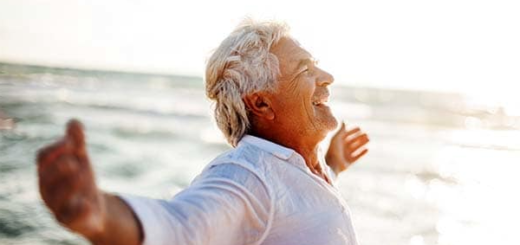Can Spending Time In A Hot Tub Benefit Your Health?
Here we go again with another one of those health and wellness research articles that grab the attention of social media junkies and fit folks alike, due to its promise of a shortcut to good health. What could be easier than simply sitting in a hot tub to improve your health? Not much, it is true, but when anything is this simple I can’t help but put on my skeptic’s hat. In an article published in Experimental Biology, researchers reported that six obese women (with PCOS) showed:
- Reduced blood pressure and heart rate (which could reduce their risk of heart disease).
- Improvements in other measures of heart health and metabolism.
- Reductions in fasting glucose (which could reduce their risk of developing diabetes).
These changes were reported after the women performed (enjoyed?) one-hour sessions in a hot tub, three to four times per week, for about two months. That is all they did. Outside of their normal routine.
The researchers speculated that sitting in a hot tub might affect the body in some of the same ways as aerobic exercise. How could this be? Well, the researchers speculated that sitting in a hot tub might affect the body in some of the same ways as aerobic exercise due to the fact that both activities (cardio and hot tubbing) raise body temperature, which makes the body increase blood flow to the skin (the natural cooling reaction). This comparison reminded me of some studies I had read a few years ago.
Interestingly, just as heat provides health benefits, so does exposure to cold temperatures. It turns out that cold exposure, a practice now increasingly popular in health and wellness circles, carries multiple health benefits that are backed by scientific research. Notably, exposing the body to cold temperatures stimulates the body’s thermogenic functions which may increase metabolism and support weight loss, as brown fat, or thermogenic fat, is activated to maintain body temperature. Cold exposure can also improve circulation, as the body works to pump blood more efficiently to maintain warmth. Regular cold exposure can support immune function by promoting a healthy stress response, potentially leading to the development of more robust immune defenses.
Previous Hot Tub and Sauna Studies
Scientists have known for years that heat exposure can cause the body to increase proteins (heat shock proteins), which have been linked to reducing inflammation, repairing damaged insulin receptors, and improving blood vessels. In a study from 2009, researchers reported that endurance athletes can potentially shave 1.9% off of their 5K race time by simply spending half an hour in a saunas after each of their training sessions. They chalked this benefit up to a rise in blood plasma, red blood cells, and the precursor of red blood cells erythropoietin or EPO.
To me, that sounds pretty darn uncomfortable though—which might be part of the mechanism of action. Jumping into a bubbling hot tub or raging sauna immediately after crushing a hard run workout is not my idea of a good time but a 1.9% improvement is nothing to sneeze at, especially in a race as short and intense as a 5K.
In a later study from 2014, they recommended that using heating gear before a workout could enhance the effectiveness of that workout. Their suggestions also included using a sauna or a hot tub (similar to the other studies) but they also suggested that doing a long warm-up could work nearly as well. The idea is to get your core temperature higher than usual before you begin your workout. So, if it doesn’t make you want to crawl back in bed, a pre-workout soak in the hot tub may help enhance your workout performance.
And yet another study from 2015 analyzed data from the Finnish Kuopio Ischemic Heart Disease Study and found that men who took more frequent saunas (4-7 times per week) actually live longer than once-per-week users. We should note that the scientists did not know why the men who took saunas more frequently lived longer but it was clear that something about relaxing in a hot environment seemed to play a role.
More Research is Needed
Back to the more recent study on the six obese women who did nothing but soak for two months. I probably don’t need to tell you that six women is too small a sample size to get excited about. Plus in an article for Every Day Health, neuroendocrinologist and PCOS researcher Jon Levine said that although initial results look promising, more research is needed. “These results were obtained from subcutaneous fat cells in a cell culture dish; they were not looking at systemic insulin resistance in these women. However, this is very promising preliminary evidence that supports further study of the effects of thermal fat therapy on insulin resistance in obese women with or without PCOS.”
My take away is that this article can be added to the growing list of studies indicating that getting yourself hot, whether it is before, after, or instead of a workout, seems to have health benefits. But I would never tell any of you to swap your daily movement routine for a simple soak in the hot tub or a sauna session. Although I would say that if you have the time and the means for both, there is sufficient evidence for me to say “why the heck not?”
Just don’t use these types of extremely small studies, done on very specific subsets of the population, that analyze cells in a test tube rather than in an actual human, as a reason to become more sedentary. (We have plenty of excuses for that already). Instead, I suggest that we use it as a motivator to raise our own body temperature and increase our own blood flow the old fashioned way!












Recent Comments